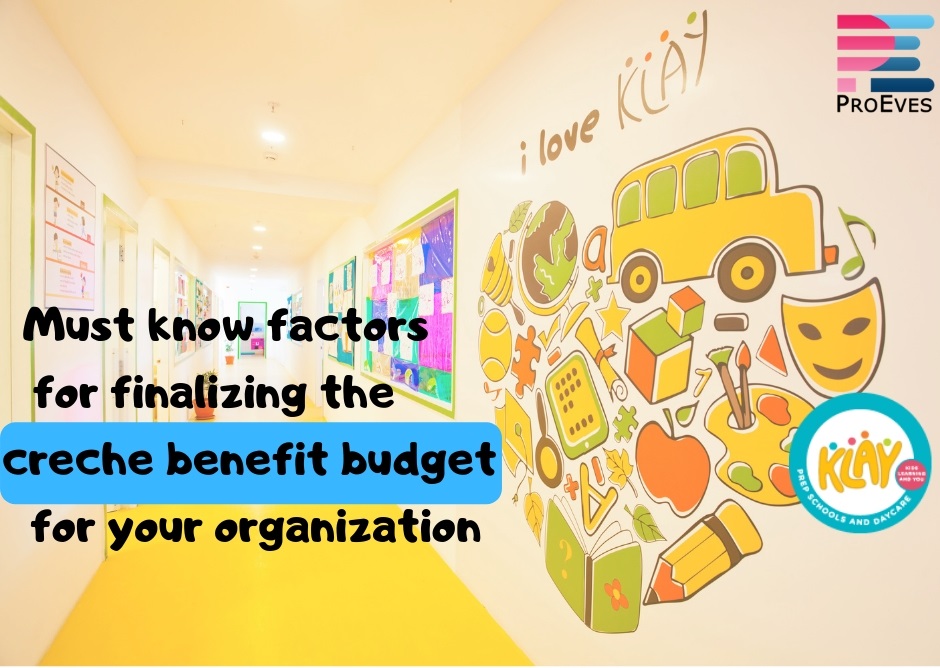India is one of the few countries which mandate 26 weeks of paid maternity leave without providing any subsidy to corporates to fund this benefit. Companies need to budget for this, along with funding the crèche benefit for the returning mother. With recent clarifications and Govt focus on implementation of the benefit, it’s imperative for companies to stay compliant and allocate funds for this. If budgeted and implemented well this benefit can prove to be a game changer to arrest the leaking pipeline on account of maternity.
Depending on the nature of arrangement of the crèche benefit – On-site, near- site or multi site tie ups, there are various cost models involved
I. Onsite crèche – The crèche facility set up in the office premises for employees. About 12% companies provide for an onsite crèche. The two cost components are – onetime set up cost and ongoing operational cost.
- One time set up cost – This involves the following elements
(i) Space – Guidelines under Factories Act mention 20 sq ft space per child and State guidelines mention 10 – 12 sq ft per child. As per market practice, most companies allocate 35 – 40 sq ft per child and provide for future demand as well.
(ii) Companies incur cost in designing, civil work and childproofing the area.
(iii) Companies provide for equipments like AV system, refrigerator, water purifier, microwave/ induction plate, furniture like child friendly chairs, tables, cradles, sleeping cots, mattresses, toys etc
This can vary anywhere from INR 2 – 10 lakhs approximately depending on the space and quality of design. The cost of real estate is not included in this.
- In terms of running the crèche, companies reach out to an experienced childcare partner. The childcare partner provides necessary staff, teacher, processes, curriculum, safety measures to run the crèche. This can vary anywhere from INR 7000 – 12000 per month, depending on the location and the facilities being provided by the childcare provider
- Monitoring and supervision of the benefit is an important part of the employer’s responsibility. This includes crèche audit led by a certified crèche, safety expert to ensure that the place is safe and incorporate any feedback that may arise from such audits. Companies need to budget an internal resource from the HR/Admin team who will liase with the daycare to ensure standards are maintained and discuss employee concerns if any
II. Near site crèche – This is one of the most preferred and prevalent models among employers as it involves minimal/ no capex. In this arrangement, companies’ tie-up with a nearby daycare centre. More than 70% of companies are adopting this approach.
1. Companies need to make an informed choice by understanding crèche options available near office. Safety measures, infant care availability, staff: child ratio, crèche infrastructure and hygiene, emergency process management need to be considered.
2. Proper communication and design of crèche benefit policy is important to create awareness of this benefit as per the Maternity Benefit Amendment Act provisions.
Costs Involved
1. Company can work with a childcare benefit management company that will support them with the tie-up, policy and communication design. The average cost can vary anywhere from INR 50,000 – INR 2, 00,000 depending on the no of locations.
2. Monthly crèche fees can vary anywhere from INR 8000 – INR 20,000 depending on the location and the crèche partner finalised. In cities like Mumbai, Gurgaon, Bangalore daycare fees are on the higher side. Near site tie-ups too sometimes requires the employer to underwrite few seats. The crèche in return blocks those many seats for that company for a year. When companies have an assured demand for daycare or when there is a demand – supply gap, companies can adopt this model.
3. Companies need to allocate resources for ongoing childcare management services – handling employee queries, complaints & counseling them. Once companies announce the details of the tie-ups, the target employee segment do have queries that need to be responded to on an going basis. With 70 percent of the daycare industry being unstructured and lack of reporting processes, it’s not uncommon for companies to outsource the entire daycare rollout process. If done internally, companies need to budget 1/3rd of the cost of their administrative staff (junior manager resource) as she/he will require spending 1/3rd of their time on an ongoing basis on rolling out and managing this benefit. 35% companies outsource this to a childcare management company at an equivalent cost of INR 1.5 Lacs per year
Funding of the Benefit and Utilization
Funding of the benefit by the Employer has an impact on the utilization, which is currently in the range of 6- 15% of the population. Companies where employer funds the dominant part of the daycare fees see higher utilization. Companies usually fund anything from 50% to 100% of daycare fees, with some of them capping the benefit at a fixed amount that can be claimed.
Companies that have a wait and watch approach towards crèche implementation will soon realize that this is a low cost – high impact benefit. The target segment that will utilize this benefit comprises less than 10% of workforce. Providing the benefit increases retention of experienced professionals and builds empathy and trust in the organization. Coupled with post maternity and parental support benefits, it creates an equal society, where it is conducive for both genders to pursue their careers and drive gender balance in India Inc.
Click Here to know more about KLAY

